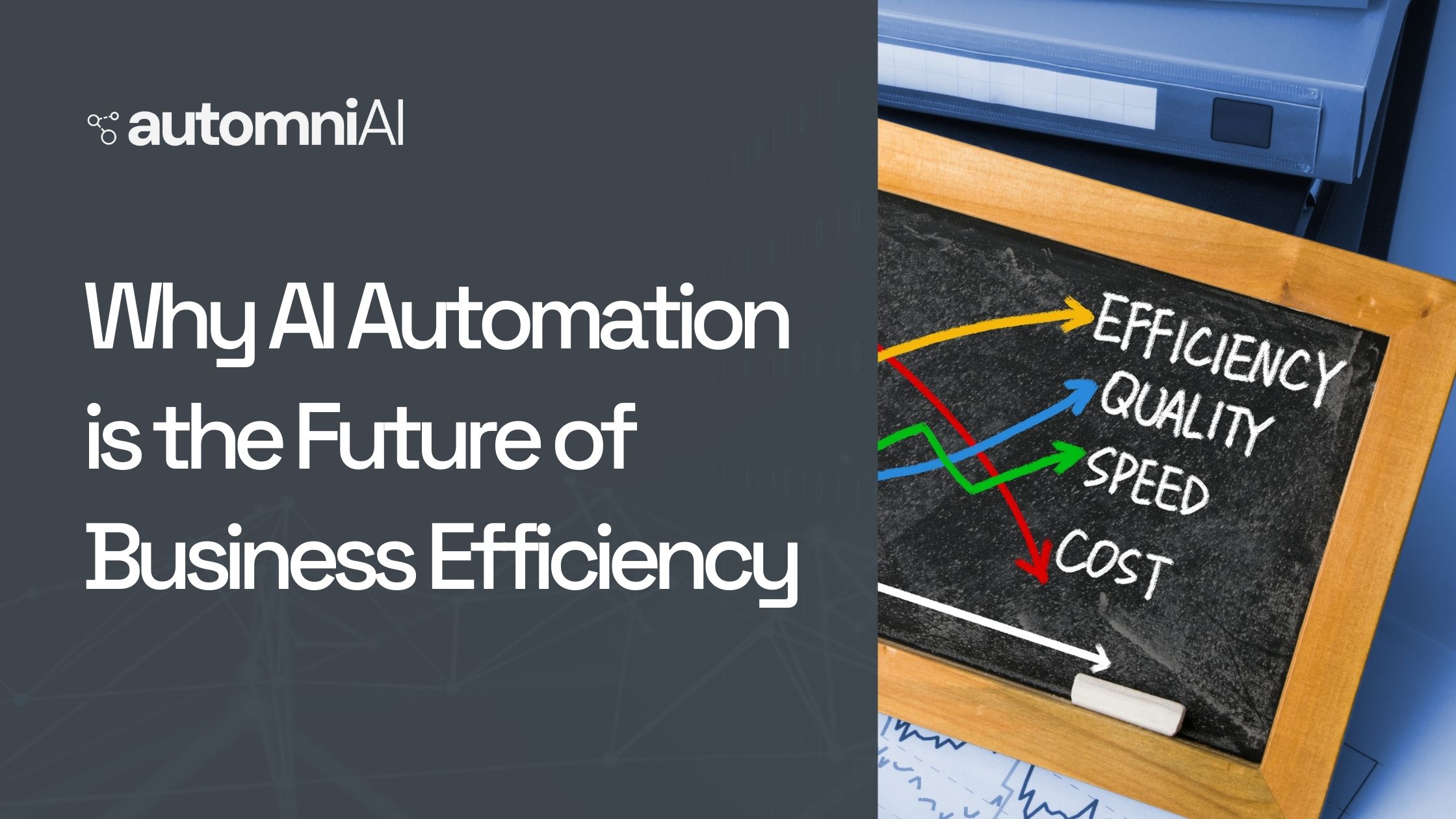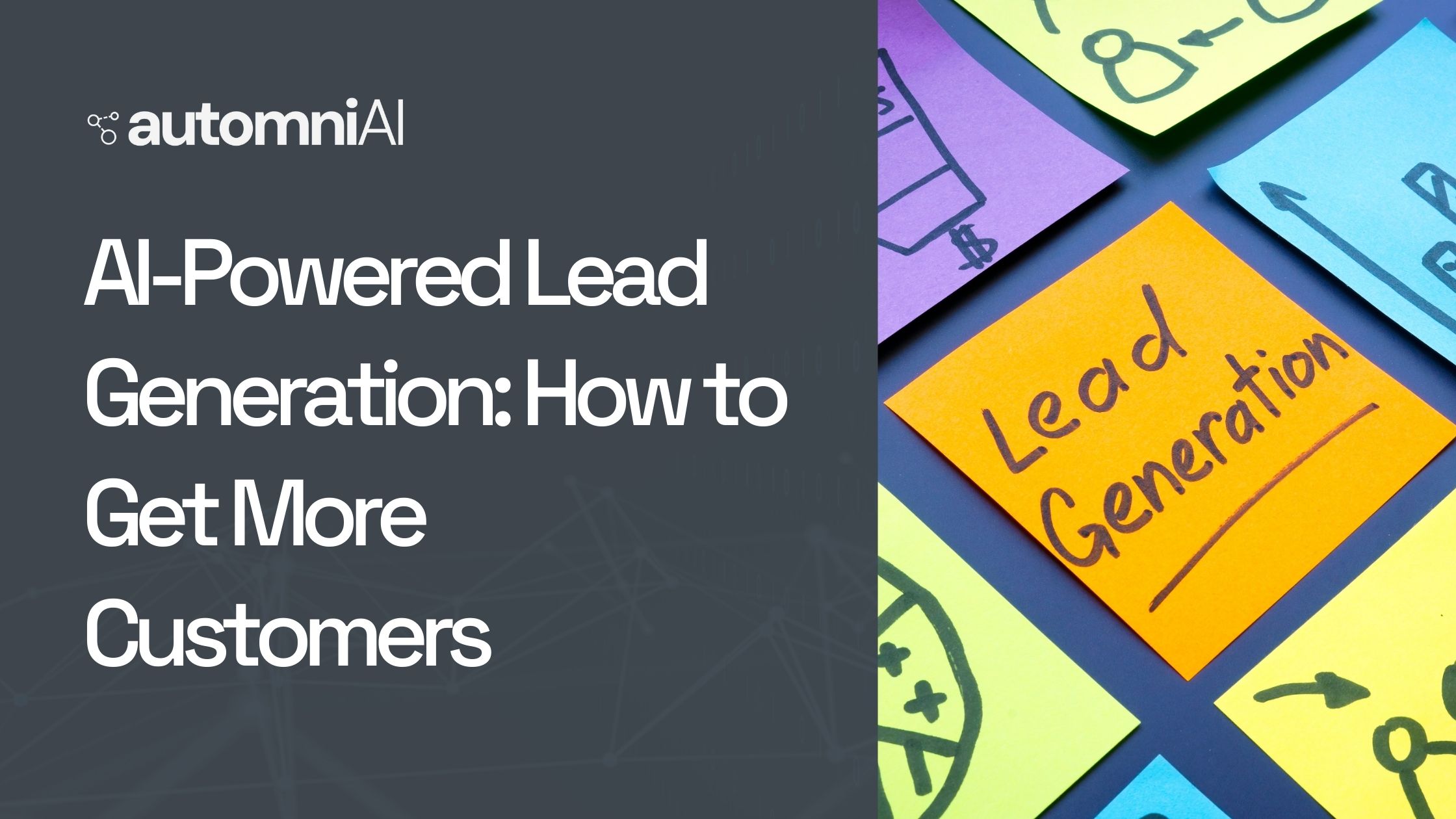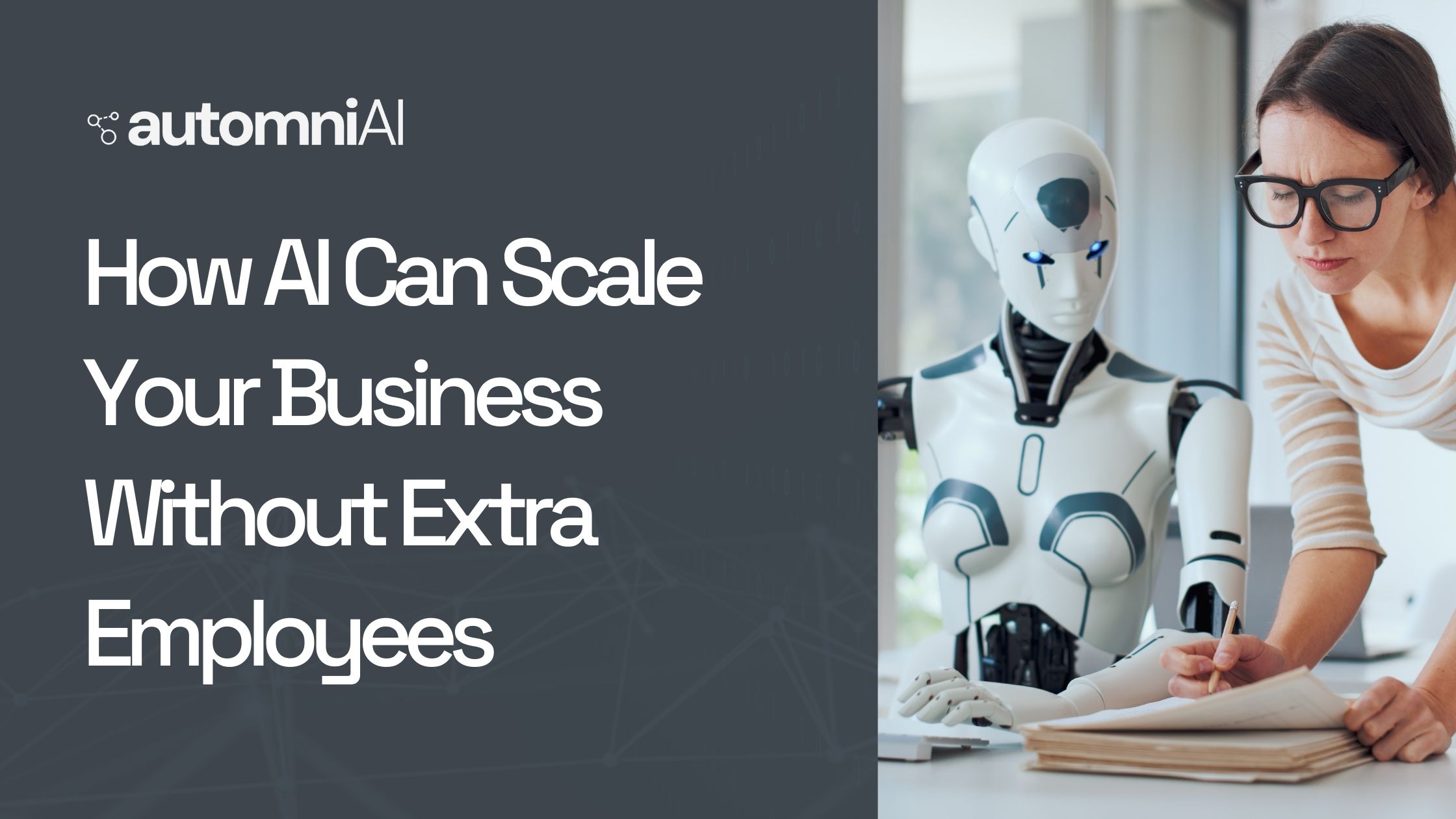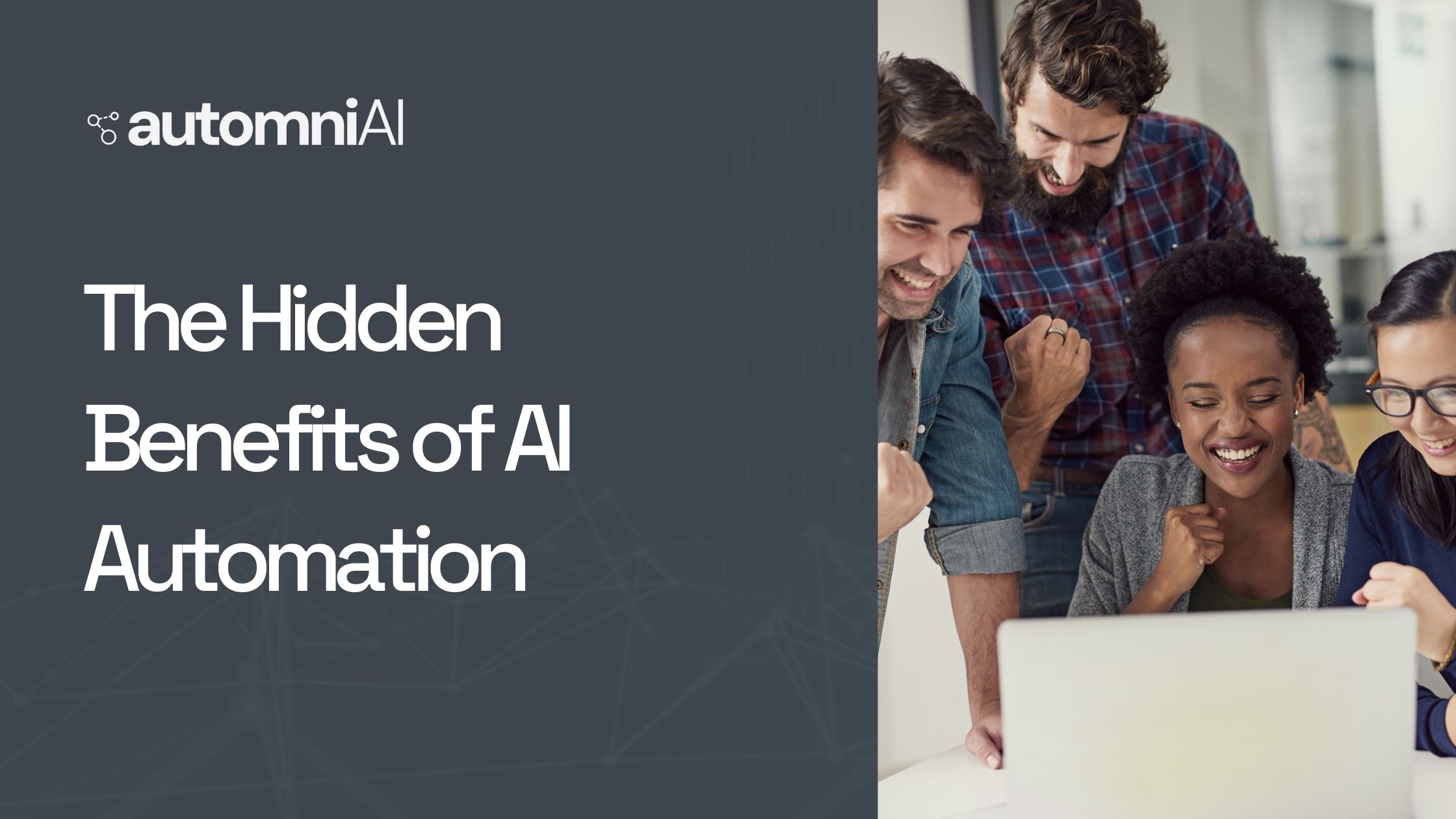In today’s digital world, businesses need more than just traditional marketing to attract and retain…

Why AI Automation is the Future of Business Efficiency
Table of Contents
AI automation is transforming the way businesses operate, making processes faster, smarter, and more efficient. With the rise of artificial intelligence, businesses can automate repetitive tasks, optimize decision-making, and enhance customer experiences. In today’s fast-paced digital world, staying competitive requires leveraging AI-powered tools that improve productivity and reduce costs. But why is AI automation considered the future of business efficiency? Let’s dive into the reasons.
1. Understanding AI Automation
What is AI Automation?
AI automation is the use of artificial intelligence technologies to perform tasks that typically require human intelligence. This includes machine learning (ML), natural language processing (NLP), robotics, and deep learning. AI-powered systems can analyze data, recognize patterns, and make decisions with minimal human intervention.
Key Components of AI Automation
- Machine Learning (ML): Enables AI to learn from data and improve over time.
- Natural Language Processing (NLP): Helps machines understand and respond to human language.
- Robotic Process Automation (RPA): Automates repetitive tasks using AI-powered bots.
- Deep Learning: Uses neural networks to process complex information, such as image recognition.
How AI Automation Differs from Traditional Automation
Traditional automation follows pre-programmed rules, whereas AI automation adapts and learns from experience. Unlike simple robotic automation, AI-driven automation continuously improves efficiency through self-learning capabilities.
2. The Role of AI in Business Efficiency
Boosting Productivity
AI-powered automation streamlines workflows by eliminating manual tasks, allowing employees to focus on high-value activities. Businesses using AI experience higher output with fewer errors.
Reducing Operational Costs
AI-driven automation reduces expenses related to labor, resource management, and operational inefficiencies. By replacing repetitive manual tasks, companies save time and money.
Improving Decision-Making
AI analyzes massive amounts of data to provide real-time insights. Businesses can make more informed decisions by leveraging AI-driven predictive analytics.
3. AI-Powered Workflow Automation
Automating Repetitive Tasks
Routine tasks like data entry, invoice processing, and email responses can be automated with AI, freeing up employees for strategic work.
Enhancing Collaboration and Communication
AI-powered tools help teams work more efficiently by automating scheduling, reminders, and document management. Virtual assistants like Microsoft’s Copilot and Google’s Gemini streamline workplace productivity.
Real-World Examples
- HR Automation: AI screens resumes, shortlists candidates, and schedules interviews.
- Finance Automation: AI tools generate financial reports, reducing human effort.
- IT Support Automation: AI-driven chatbots handle technical support queries instantly.
4. AI in Customer Service and Support
AI Chatbots and Virtual Assistants
AI-driven chatbots provide instant customer support, handling queries efficiently and improving response times. Companies like Amazon and Meta use AI assistants to enhance user experiences.
24/7 Customer Support
Unlike human agents, AI chatbots operate round the clock, providing continuous support without breaks.
Personalized Customer Experiences
AI analyzes customer data to offer personalized recommendations, making interactions more engaging. For example, Netflix and Spotify use AI to curate content based on user preferences.
5. AI in Data Management and Analytics
AI-Driven Insights
AI-powered analytics tools process large datasets to identify patterns and trends, helping businesses make informed decisions.
Predictive Analytics in Business Growth
Companies use AI to forecast market trends, demand, and customer behavior, enabling better planning and strategy execution.
Fraud Detection and Risk Assessment
Banks and financial institutions use AI to detect fraudulent transactions in real time, minimizing security risks.
6. Enhancing Marketing Strategies with AI
AI in Digital Advertising
AI-powered advertising platforms, such as Google Ads and Meta Ads, use machine learning to optimize ad placements and target the right audience. These systems analyze user behavior, demographics, and preferences to ensure businesses get the highest return on investment (ROI).
Personalized Marketing and Customer Targeting
AI helps businesses create hyper-personalized marketing campaigns by analyzing customer data. AI-powered recommendation engines, like those used by Amazon and Netflix, suggest products based on users’ browsing and purchase history, increasing engagement and sales.
AI-Generated Content and SEO Optimization
AI tools like ChatGPT and Jasper generate high-quality content for blogs, emails, and social media. AI-driven SEO tools analyze search trends and recommend optimized keywords, helping businesses rank higher on Google.
7. AI in Human Resource Management
Automating Recruitment and Talent Acquisition
AI simplifies hiring by scanning resumes, matching candidates with job descriptions, and conducting initial interviews via chatbots. Platforms like LinkedIn and Indeed use AI to recommend job listings to candidates based on their skills and experience.
AI-Driven Employee Engagement and Training
AI helps HR teams monitor employee performance and engagement levels. AI-driven learning platforms, such as Coursera and Udemy, offer personalized training recommendations to enhance workforce skills.
Performance Evaluation with AI Analytics
AI tools analyze employee productivity and suggest ways to improve efficiency. Companies use AI-driven dashboards to track performance and provide constructive feedback.
8. AI in Supply Chain and Logistics
Optimizing Inventory Management
AI predicts demand fluctuations and ensures businesses maintain optimal stock levels. Walmart and Amazon use AI to manage their vast inventories efficiently, reducing wastage and maximizing profits.
AI-Driven Demand Forecasting
Predictive analytics help businesses plan for future demand based on historical data and market trends. AI-powered forecasting tools reduce the risk of overproduction and understocking.
Smart Warehouses and Autonomous Delivery Systems
- AI robots in warehouses streamline order fulfillment, reducing human intervention.
- Autonomous delivery systems, such as Amazon’s drone delivery service, enhance last-mile delivery efficiency.
9. AI in Finance and Accounting
Automated Financial Reporting and Bookkeeping
AI-driven accounting software, like QuickBooks and Xero, automates bookkeeping, reducing human errors and saving time.
Fraud Detection and Risk Assessment
AI monitors financial transactions in real time, identifying fraudulent activities based on unusual spending patterns. Banks use AI-driven security systems to prevent cyber fraud.
AI-Driven Investment Strategies
Robo-advisors, like Wealthfront and Betterment, use AI to analyze market trends and recommend investment strategies, helping individuals and businesses make data-driven financial decisions.
10. AI and Cybersecurity
AI-Powered Threat Detection and Prevention
AI security systems identify and mitigate cyber threats faster than traditional methods. AI-powered cybersecurity tools detect malware, phishing attacks, and unauthorized access attempts in real-time.
Enhancing Data Privacy and Compliance
Businesses use AI to comply with data privacy laws such as GDPR and CCPA. AI ensures sensitive data is encrypted and protected against breaches.
Role of AI in Mitigating Cyber Risks
AI continuously monitors network traffic and detects anomalies, preventing cyberattacks before they cause damage. Companies like IBM and Palo Alto Networks use AI to enhance cybersecurity frameworks.
11. Challenges and Risks of AI Automation
Ethical Concerns in AI Implementation
AI decision-making processes can sometimes be biased due to flawed training data. Businesses must ensure AI models are fair, transparent, and accountable.
Job Displacement and Workforce Transformation
As AI automates repetitive tasks, some jobs may become obsolete. However, new AI-driven roles will emerge, requiring employees to upskill and adapt to technological advancements.
AI Biases and the Need for Human Oversight
AI systems may inherit biases from the data they are trained on. Human oversight is necessary to ensure fairness and ethical decision-making in AI applications.
12. Future Trends in AI Automation
AI and the Evolution of Workplace Roles
AI will not replace humans entirely but will complement their skills. Businesses will need a hybrid workforce where AI and humans work together to maximize efficiency.
Integration of AI with IoT and Blockchain
- AI-powered IoT devices enhance smart manufacturing, predictive maintenance, and automation.
- Blockchain technology ensures secure AI-driven transactions and data integrity.
The Rise of Hyper-Automation
Hyper-automation combines AI, machine learning, and robotic process automation (RPA) to create fully autonomous business processes. Companies investing in hyper-automation will gain a competitive edge.
13. How Businesses Can Prepare for AI Automation
Steps to Implement AI Successfully
- Identify Key Areas for Automation: Determine which processes can be improved with AI.
- Choose the Right AI Tools: Invest in AI platforms that align with business goals.
- Pilot AI Programs: Test AI automation on a small scale before full implementation.
- Monitor and Optimize: Continuously track AI performance and make improvements.
Upskilling Employees for an AI-Driven Future
Businesses should provide AI training programs to help employees adapt to automation. Platforms like Coursera and Udacity offer AI certification courses to develop AI-related skills.
Choosing the Right AI Tools for Business
- AI chatbots (e.g., ChatGPT, Drift) for customer support
- AI-powered analytics (e.g., Tableau, Google Analytics) for data insights
- AI-driven HR tools (e.g., HireVue, Workday) for recruitment
14. Case Studies: Companies Benefiting from AI Automation
Amazon’s AI-Driven Logistics and Customer Service
Amazon uses AI to optimize its supply chain, automate warehouse operations, and personalize customer recommendations, leading to faster deliveries and increased customer satisfaction.
Tesla’s AI-Powered Autonomous Vehicles
Tesla’s AI-driven autopilot system improves vehicle safety, reduces accidents, and enhances self-driving capabilities.
Netflix’s AI-Driven Content Recommendation System
Netflix’s AI algorithm analyzes user behavior to suggest personalized content, increasing viewer engagement and retention rates.
AI automation is the driving force behind business efficiency, helping companies streamline operations, reduce costs, and improve decision-making. From customer service to finance, AI is revolutionizing industries by optimizing processes and enhancing productivity. As AI technology continues to evolve, businesses must embrace automation to stay competitive in the digital age.
By implementing AI strategically and ensuring ethical practices, businesses can unlock new opportunities for growth and innovation. The future of business efficiency is AI-driven—will your company be ready to embrace it?
FAQs
1. What industries benefit the most from AI automation?
Industries like finance, healthcare, e-commerce, logistics, and marketing benefit significantly from AI automation, as it enhances efficiency and reduces operational costs.
2. Will AI automation replace human jobs completely?
AI will automate repetitive tasks, but human skills such as creativity, critical thinking, and emotional intelligence will remain irreplaceable. New AI-driven roles will also emerge.
3. How can small businesses afford AI automation?
Many AI tools offer affordable plans for small businesses. Cloud-based AI solutions provide cost-effective automation options without requiring large investments.
4. What are the risks of AI in business?
Risks include data privacy concerns, AI biases, cybersecurity threats, and job displacement. Proper regulation and ethical AI implementation can mitigate these risks.
5. How can businesses start implementing AI automation?
Businesses should identify areas where AI can add value, invest in the right AI tools, train employees, and gradually integrate AI-driven processes for maximum efficiency.




Comments (0)